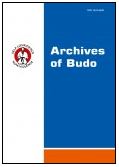2017, Volume 13
Skeletal muscle contraction time is an important factor in the muscle damage response in kickboxing athletes
Damir Zubac1, Boštjan Šimunič2, Hrvoje Karninčić3, Vladimir Ivančev4
1University of Zagreb, Faculty of Kinesiology | Science and Research Center Koper, Institute for Kinesiology Research, Zagreb, Croatia
2Science and Research Center Koper, Institute for Kinesiology Research, Koper, Slovenia
3University of Zagreb, Faculty of Kinesiology, Split, Croatia
4University of Split, Faculty of Kinesiology, Split, Croatia
Author for correspondence: Damir Zubac; University of Zagreb, Faculty of Kinesiology | Science and Research Center Koper, Institute for Kinesiology Research, Zagreb, Croatia; email: damir.zubac[at]kifst.hr
Full text
Abstract
Background and Study Aim: Combat sports athletes strive to improve their muscle performance, however, they also habitually attempt to voluntarily reduce their body-mass prior to competition. The cognitive purpose of this study was the knowledge about combined effects of voluntary body-mass loss and the influence of exercise induced muscle damage (EIMD) markers on the mechanical muscle properties in real-life settings.
Materials & Methods: Ten elite kickboxing athletes (all males, age 22.1 ±4.1 years) were tested at the beginning of the tapering period (t-1) and two days prior to the competition (t-2). Muscle mechanical properties (contraction time Tc; the maximum amplitude of radial displacement Dm) of the biceps femoris (BF), vastus lateralis (VL) and vastus medialis (VM) of each athlete’s dominant leg were assessed using tension myography, while blood and urine samples were collected to address biochemical response and hydration status.
Results: Body-mass decreased by −1.3%, plasma volume decreased −0.9 ±1.5%, while EIMD markers decreased by –74.4% and −29.4% (p<0.05) for creatine kinase (CK) and lactate dehydrogenases (LDH), respectively. Tc of the VL and BF decreased by −22.2% and −9.9% (p<0.001), respectively, while the Dm decreased only in BF by −20.7% (p<0.001). This study also found a moderate correlation between the average Tc of all three muscles and the CK activity (rs= −0.70; p=0.03).
Conclusions: Apparently, after a tapering period that was paralleled by gradual body-mass loss, kick-boxers decreased their EIMD markers and improved their contractile muscle performance. According to present correlation findings, Tensiomyography assessment could be used as a surrogate method to denote local muscle fatigue. However, these data also suggest that the CK activity decreases were lower in athletes with lower averaged Tc, an indirect measure of myosin heavy chain type-I proportion.
Key words: Blood analysis, hydration, muscle function, contractile characteristics, combat sports athletes, training load




